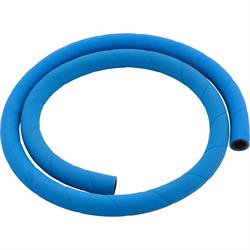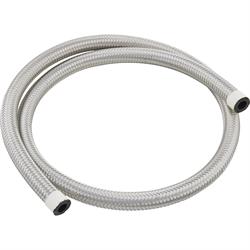Fuel System Design Guide
Fuel System - Pressure and Lines
Fuel Pressure and Volume
As a general rule, you can calculate how much fuel your engine requires. At wide open throttle a naturally aspirated engine will require about .5lbs of fuel per horsepower every hour. Forced induction will be slightly higher, .6 to .75lbs/hr. Take a gallon of gasoline which weighs about 6lbs and do the math.
For example:
An engine rated at 350hp x .5 = 175lbs
175lbs ÷ 6 = 29 gallons per hour (GPH)
The relationship between pressure and volume are inversely proportional. As fuel system pressure increases the volume decreases. Whether it’s carbureted or fuel injected, consider what your fuel delivery system requires to operate. For example, if we take a carbureted mildly built street engine under 450hp, a pump rated 110GPH with 6 to 8psi will be more than adequate.
Fuel Pressure Regulators
On four barrel carbureted systems fuel pressure requirements typically range between 6 and 8psi. If you’re installing a fuel pump rated between 6 and 8psi, the fuel system will not require a regulator. When using pumps rated above 8psi a regulator is required to keep the carburetor from flooding.
Note: On many vintage carburetors such as Stromberg and Ford model 94 carburetors, the maximum pressure should not exceed 3psi. Anything above that can overpower the needle and seat and flood the carburetor.
Fuel Lines
Most stock applications came with 5/16-inch fuel line, but for many street vehicles and mild race applications 3/8-inch (AN 6) fuel line is a good upgrade. High performance applications and racers using alcohol will use 1/2-inch (AN 8) fuel line. Avoid using rubber lines in your fuel system and route your lines as far away as possible from heat sources like exhaust. Aluminum fuel line works great on low pressure applications, or you can opt for Speedway’s blue and black high pressure fuel hose, or stainless steel braided hose. When you’re routing fuel line, remember that a 90-degree fitting is equal to adding several feet of line to the fuel system. So, it's better to use two 45-degree fittings around a turn instead of one 90-degree fitting.



